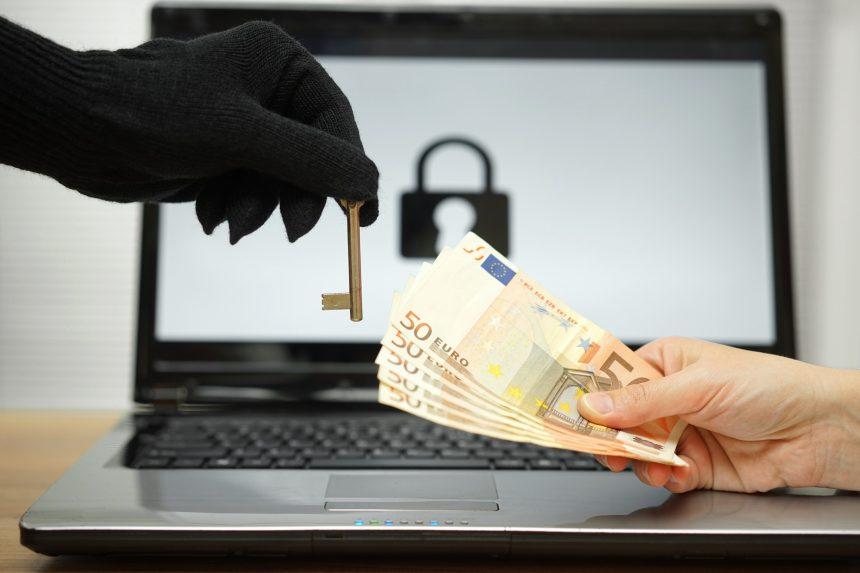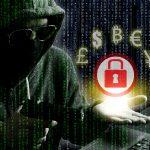Ransomware is a form of malicious software designed to deny access to a computer system or data until a ransom is paid. This growing threat poses significant risks to individuals and organizations alike, as it encrypts critical files and demands payment for their release. Among various types of ransomware, NK ransomware has emerged as a notable variant of the notorious chaos ransomware family, gaining attention due to its aggressive tactics and severe consequences for infected users.
The NK Ransomware Threat
How NK Ransomware Functions
NK ransomware operates by infiltrating a computer system and encrypting valuable files, rendering them inaccessible to the user. Once executed, it typically employs advanced encryption algorithms to lock files, which can include documents, images, databases, and other essential data.
Download SpyHunter Now & Scan Your Computer For Free!
Remove this and any other malicious threats to your system by scanning your computer with SpyHunter now! It’s FREE!
Installation and Actions Post-Installation
NK ransomware is commonly distributed through malicious email attachments, exploit kits, or compromised websites. Once a user unwittingly executes the malicious file, the ransomware rapidly begins its encryption process. This process often targets files with common extensions, such as .docx, .jpg, and .pdf, altering them with a specific extension— for instance, changing document.docx to document.docx.NK.
The consequences of NK ransomware are severe. In addition to the loss of access to personal files, users may experience system slowdowns and additional unauthorized software installations. This malware often connects to remote servers to receive commands or send data, further compromising the user’s security.
The Ransom Note
The NK Ransom Note
After encrypting the user’s files, the NK ransomware operators deploy a ransom note with instructions for the victims. In the said note, they provide communication channels for the victims to contact the cybercriminals in order to transfer funds for decrypting their files. Cybersecurity experts advise agains contacting the ransomware operators, as there is no guarantee that they will, or even are able to decrypt your files after you pay the ransom fee. The ransom note is in the form of a .txt file – “read_it.txt” planted in every folder containing encrypted files, and on the users desktop.
Text presented in the ransom note (read_it.txt):
—-> NK is the most advanced ransomware in existence. You will not get out unscathed <—-
All of your files have been encrypted
Your computer was infected with a ransomware. Your files have been encrypted and you won’t
be able to decrypt them without our help.What can you do to get your files back? Buy our special
decryption software! This software will allow you to recover all of your data and remove the
ransomware from your computer.The price for the software is 5 Litecoin. Payment can be made in Litecoin only. After paying and your payment reaching 6 confirmations, your data will be restored and the ransomware removed.
How do I pay? where do I get Litecoin?
You have 2 options :
use an exchanger : hxxps://discord.gg/plusswap
buy Litecoin directly : hxxps://youtu.be/jdhxLHO2-zo?feature=shared
Payment Amount: 5.0 LTC
Litecoin address: ltc1qjqysln5s8lpphyc0e7dnx0nphc52t9zypxzpak
Try anything funny and see what happens! 😉
You have 24 hours to pay before your pc is completely destroyed.
Threat Family and Purpose
NK ransomware belongs to a broader family of ransomware known for its aggressive encryption techniques and extortion tactics. Its primary purpose is to monetize attacks by exploiting user fear and desperation. By infiltrating systems through social engineering tactics or vulnerabilities, it can spread rapidly and impact numerous users, amplifying its effectiveness.
Symptoms of NK Ransomware Infection
Users may notice several symptoms indicating the presence of NK ransomware on their systems, including:
- Inaccessible Files: Attempting to open files that suddenly display the new encryption extension.
- System Slowdown: A significant decrease in system performance due to the ransomware’s background activities.
- Unusual Pop-Ups: Unexpected ransom notes or browser redirects to suspicious websites.
- Unfamiliar Programs: Newly installed applications that the user did not authorize.
Detection Names for NK Ransomware
If you suspect that your system might be infected, look for the following detection names used by various antivirus solutions:
- Ransom.NK
- NK Ransomware
- Win32/NK Ransomware
- Trojan:Win32/NK
Similar Threats to Be Aware Of
In addition to NK ransomware, users may encounter other variants such as:
- LockBit Ransomware: Known for its fast encryption and wide-reaching attacks.
- REvil Ransomware: A notorious threat that targets enterprises and extorts large sums.
- Conti Ransomware: Characterized by its rapid spread and aggressive tactics.
Comprehensive Removal Guide for NK Ransomware
If you find yourself a victim of NK ransomware, follow these detailed steps to remove the threat from your system:
Download SpyHunter Now & Scan Your Computer For Free!
Remove this and any other malicious threats to your system by scanning your computer with SpyHunter now! It’s FREE!
Step 1: Disconnect from the Internet
To prevent the ransomware from communicating with remote servers, immediately disconnect your device from the internet.
Step 2: Enter Safe Mode
- Restart your computer.
- Before Windows loads, press
F8or holdShiftwhile selectingRestartto access the Advanced Startup Options. - Select
Safe Mode with Networking.
Step 3: Run a Malware Scan
- Download SpyHunter.
- Install the software and run a full system scan.
- Follow the software’s prompts to remove any identified threats.
Step 4: Restore Encrypted Files (if possible)
If you have backups of your encrypted files, now is the time to restore them. Avoid paying the ransom, as it may not guarantee the return of your data.
Step 5: Update Security Measures
- Ensure your operating system and software are up to date.
- Install a reputable antivirus program and schedule regular scans.
Preventing Future Infections
To safeguard against future ransomware attacks, consider the following preventative measures:
- Regular Backups: Maintain regular backups of your critical files using external drives or cloud storage.
- Email Caution: Be wary of unexpected email attachments, especially from unknown senders.
- Security Software: Keep your antivirus and anti-malware tools updated and enabled.
- System Updates: Regularly update your operating system and applications to patch security vulnerabilities.
SpyHunter to the Rescue
To further protect your system from NK ransomware and similar threats, consider downloading SpyHunter. This comprehensive anti-malware tool offers a free scan to detect potential threats and provides advanced removal options to keep your device secure.
Download SpyHunter Now & Scan Your Computer For Free!
Remove this and any other malicious threats to your system by scanning your computer with SpyHunter now! It’s FREE!
Conclusion
Ransomware, particularly variants like NK ransomware, poses a significant risk to individuals and organizations alike. By understanding its functions, recognizing symptoms, and following a detailed removal process, users can effectively protect themselves from this malicious threat. Stay vigilant, and ensure you have the necessary security measures in place to avoid falling victim to ransomware attacks.





